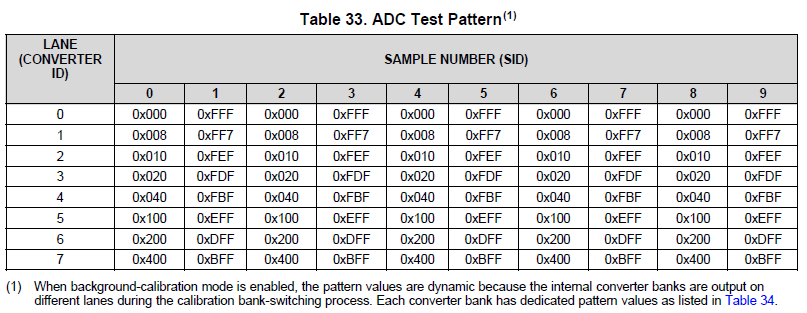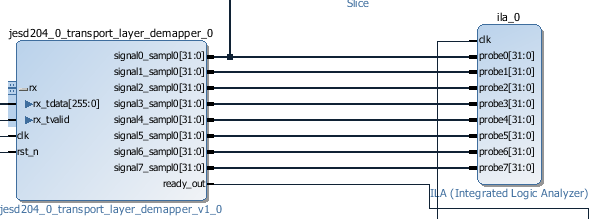Hi everyone,
I built a FPGA project for ADC12J4000EVM.
I configured the board through ADC12J4000EVM GUI.
On the ADC side, the configurations are as follows.
On-board Fs=3760Msps.
Bypass Mode; DDR
L = 8
K = 10
Scrambler off
On the FPGA side, the JESD configurations are as follows.
Refclk = 188MHz
Coreclk = 94MHz
L = 8
M = 10
F = 2
According to page 48 of ADC12J4000 datasheet, the ADC test pattern should be as follows.
I tried the Test Pattern mode, and exported the data of 8 lanes through ILA. As follows.
The data from lane 0~2 are the same as the sampled data, while the data from lane 3~7 are not.
Can anyone tell me what I was doing wrong?
Thank you.
Regards,
Tong







